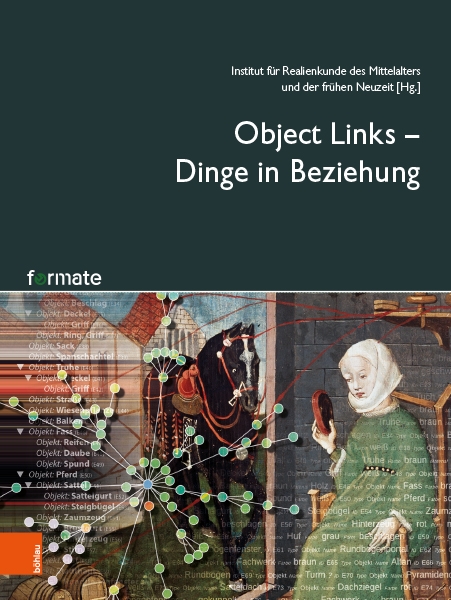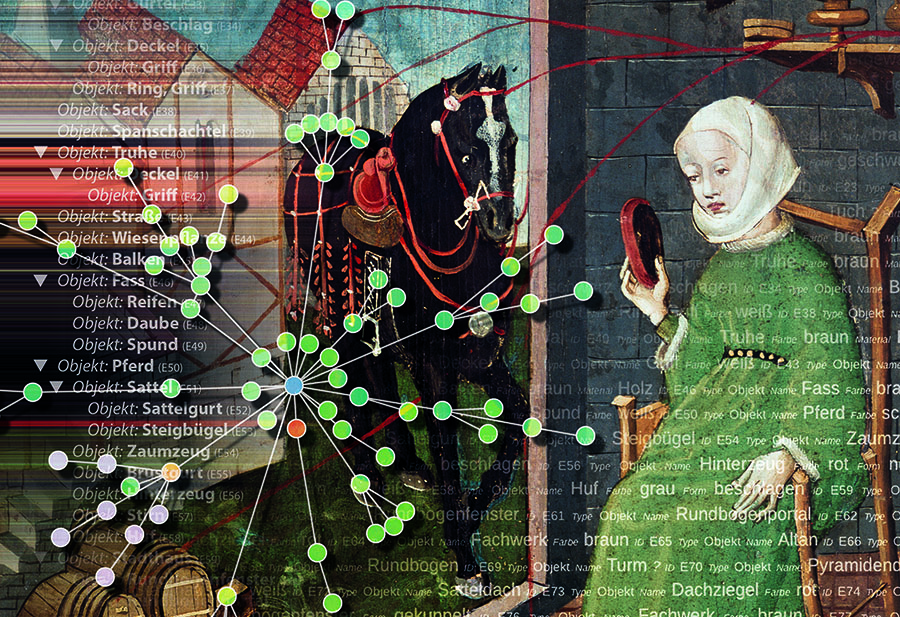
- Home
- Our Research Approaches
- Object Links
The Object Links research approach does not analyse the objects themselves, but the links between the objects and between objects and people. An object that is part of our environment and plays a role in our actions does not always and everywhere have the same importance or effect. Let’s take for example a chair: you can sit on it, but also stand on it to reach something higher up. In the latter case, the object primarily defined as seating furniture converts to a device with the function of a stepladder or the like. The meanings of an object depend on the situations in which it occurs or is used, i.e. on the links it has to other objects, to rooms and to people. These links that make a “thing” observable and determinable as an object are called object links, forming a discrete category of material culture.
The questions dealing with the history of objects cannot be limited to what the objects looked like, how they were created, spread and used and how meaning was ascribed to them. You can also ask completely different questions: How do objects contribute to the course of history? What is their meaning in a cultural and humanistic horizon that extends beyond the setting in which they were actually used? What role do they play in a history of knowledge? How can you describe their corresponding epistemological status?
From the perspective of cultural studies, there is no such thing as “the one and only object” with pinned down meanings (in contrast to the ontological perspective). It is only captured where it becomes observable as “objectum” (thing presented to the mind) in its links, where it forms part in constellations and practices and where these links ascribe meanings to the object. The Object Links research approach therefore does not primarily analyse the objects themselves, but the links between the objects and between objects and people. Depending on the point of observation, acting people and objects (to some degree also as actors and agents) as well as objects and objects form distinct object communities established through these links, i.e. objects link. The basic thesis is that the types of links in the object communities create the respective form of appearance, the meaning and effect of the objects, which in turn makes the links themselves substantial elements of material culture. Links and practices are interactive as practices determine how the objects are linked in the object communities, and the existing links in turn determine the practices. Different types, characteristics and effects of these links manifest themselves in the structures of object communities.


Based on the object links concept, the meaning of objects in history and for cultures can be explored in more detail. How are links to objects commemorated and remembered? What functions do objects have in designing and establishing social structures and as media of communication and representation? How do objects interact with each other and how does this interaction shape the space? The links of objects among each other and between objects and people in topographical or social settings can be investigated on different scales. Object ensembles become tangible by analysing elements of decoration, the spatial arrangement and by written documents in secular and sacred spaces. Object links of individual persons or groups manifest in donations to ecclesiastic institutions or in the culture of gift giving. The meaning of an image changes when it enters new contexts, creating new object links. An essential keyterm in this context is object biography in which any specific object repeatedly can become a newly defined object. Our book “Object Links – Dinge in Beziehung”, Vienna et al. 2019, contains first results on these issues.
The Object Links research perspective relies on the documentation and contextualisation of objects. The IMAREAL works on these subjects across sources and disciplines belonging to the institute’s basic research. Visualizations that are tailored to the respective sub-projects (e.g. digital models of virtual rooms) play a key role as research tools and as means of an adequate display of the research results. All this is closely linked to the permanent advancement of existing resources and competence of the Digital Humanities at the IMAREAL.